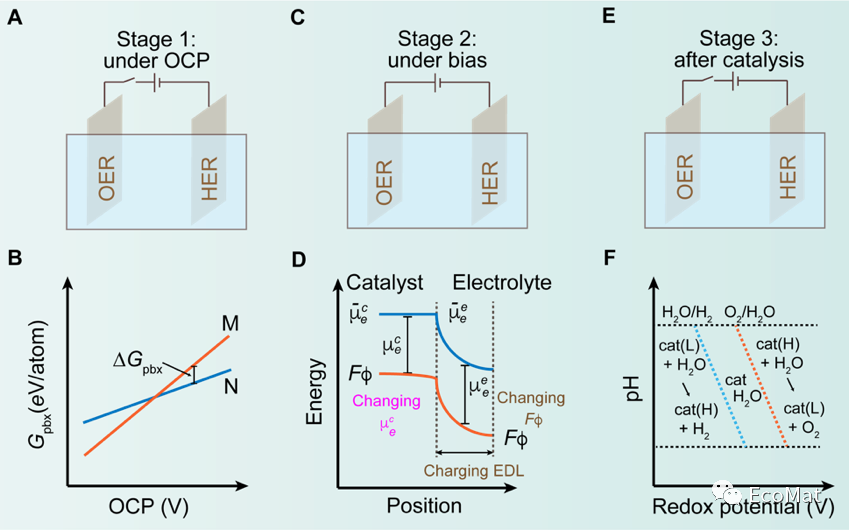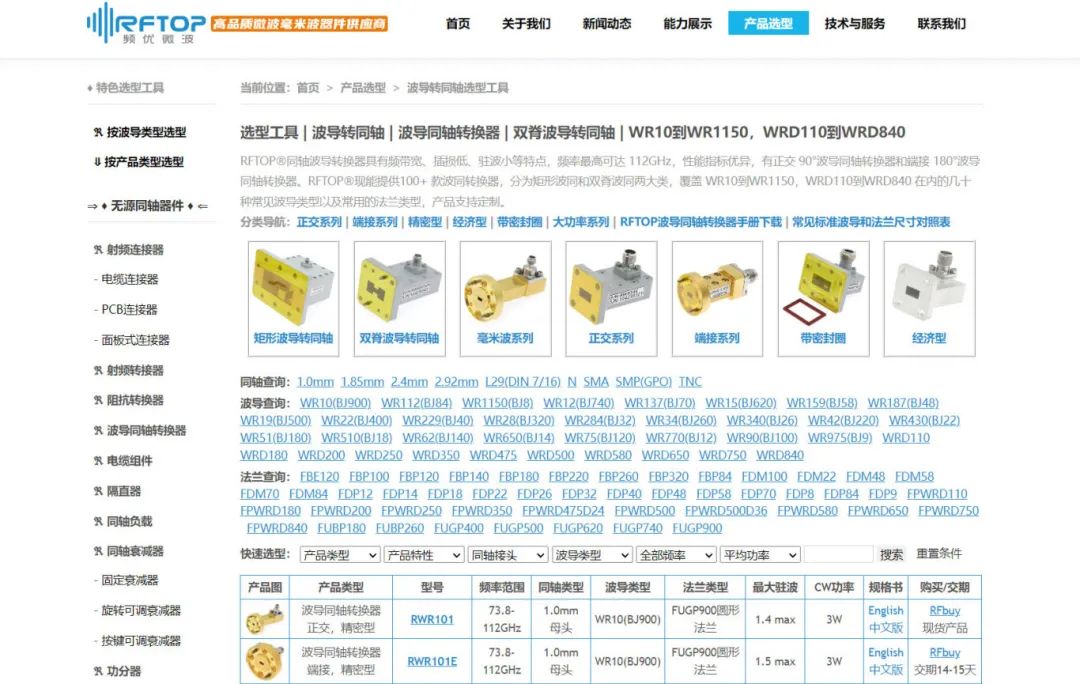brief background
氫氣是人類社會可持續(xù)發(fā)展的理想燃料。在過去數(shù)十年中,通過給催化劑施加電壓將水分解制取氫氣吸引了大量的研究興趣。合適的催化劑可以降低水分解的活化能,提升反應速率。而催化劑材料的晶型、電子結構以及組分會隨著施加的電壓動態(tài)變化(即重構)。一般而言,電解水反應以及催化劑表面重構的驅動力皆默認為來自外部施加的電壓。
然而,隨著原位表征技術的應用以及認知的進步,學者們逐漸認識到,化學驅動力在表面重構、反應速率/機理以及反應后的催化劑與水分子之間的化學氧化還原反應中起著關鍵的作用。
problems addressed
該工作梳理并總結了電解水反應前、反應中以及反應后,化學驅動力的來源及其對表面重構、反應速率/機理和界面氧化還原反應的影響,并指出了進一步認識化學驅動力在電解水中的機遇與挑戰(zhàn)。
major highlights
香港理工大學黃海濤教授課題組在EcoMat發(fā)表綜述性文章,全面歸納并分析了電解水三個階段存在的化學驅動力。首先簡要介紹了化學驅動力的不同場景及其相應的來源;其次總結了涉及化學驅動力的工作,并揭示了它們對電解水的影響;隨后得出的結論是化學驅動力對催化劑的表面重構、催化反應活性、反應機理以及反應后催化劑與水分子之間的化學氧化還原反應都有影響;結尾提出了電催化中化學驅動力的幾個研究方向,以供讀者參考。
該工作的目標是提高能源界對這一新觀點的認識,并希望它能為能源存儲和轉換應用的材料設計做出貢獻。

Figure 1. Chemical driving force in three different scenarios. (A) and (B) Schematics of the Pourbaix decomposition free energy (ΔGpbx) as a function of OCP at certain pH, where M denotes the stable species on Pourbaix diagram and N represents the as-synthesized catalysts. (C) and (D) Chemical driving force versus electrostatic driving force under bias. Itemsc e and c e refer to the electrochemical and chemical potentials of the catalyst. Itemse e and e e refer to the electrochemical and chemical potentials of the electrolyte. (E) and (F) Redox potentials of catalysts and water molecules. Cat(L) and cat(H) refer to catalysts with low and high redox potentials, respectively; H2O/H2 and O2/H2O refer to the chemical equilibrium potentials between H2O and H2 as well as O2 and H2O, respectively.
文章信息:
Gao Chen, Chao Wei, Yanping Zhu,* Haitao Huang,* Emerging chemical driving force in electrocatalytic water splitting, EcoMat, 2022; e12294
原文鏈接:
https://doi.org/10.1002/eom2.12294
審核編輯:劉清
-
能源存儲技術
+關注
關注
0文章
4瀏覽量
2528
原文標題:黃海濤EcoMat:電解水中的化學驅動力
文章出處:【微信號:清新電源,微信公眾號:清新電源】歡迎添加關注!文章轉載請注明出處。
發(fā)布評論請先 登錄
相關推薦
臺積電擬進一步收購群創(chuàng)工廠擴產先進封裝
英特爾將進一步分離芯片制造和設計業(yè)務
RFTOP進一步擴充波導同軸轉換器產品線

iPhone 15在美國市場需求進一步減弱
Melexis推出全新MLX81123芯片,進一步擴展LIN RGB系列產品線
西門子與微軟進一步擴展戰(zhàn)略合作關系
進一步解讀英偉達 Blackwell 架構、NVlink及GB200 超級芯片
TDK進一步擴充Micronas嵌入式電機控制器系列HVC 5x

Arbe在中國上海設立分公司,進一步增強企業(yè)影響力
隆基攜手DAT Group與SPower進一步加速越南高效能量綠色轉型
英飛凌重組銷售與營銷組織,進一步提升以客戶為中心的服務及領先的應用支持能力





 進一步認識化學驅動力在電解水中的機遇與挑戰(zhàn)
進一步認識化學驅動力在電解水中的機遇與挑戰(zhàn)











評論